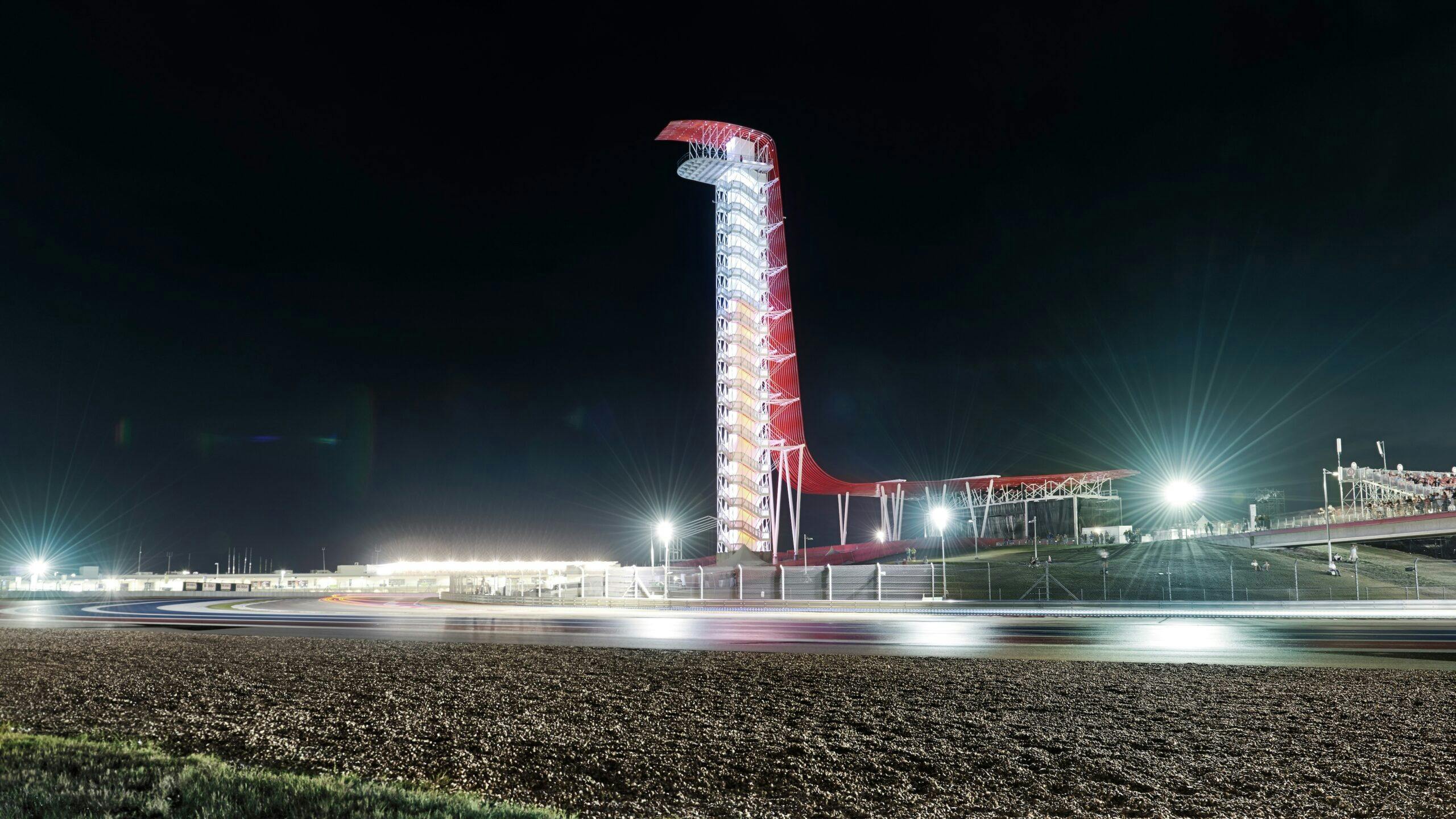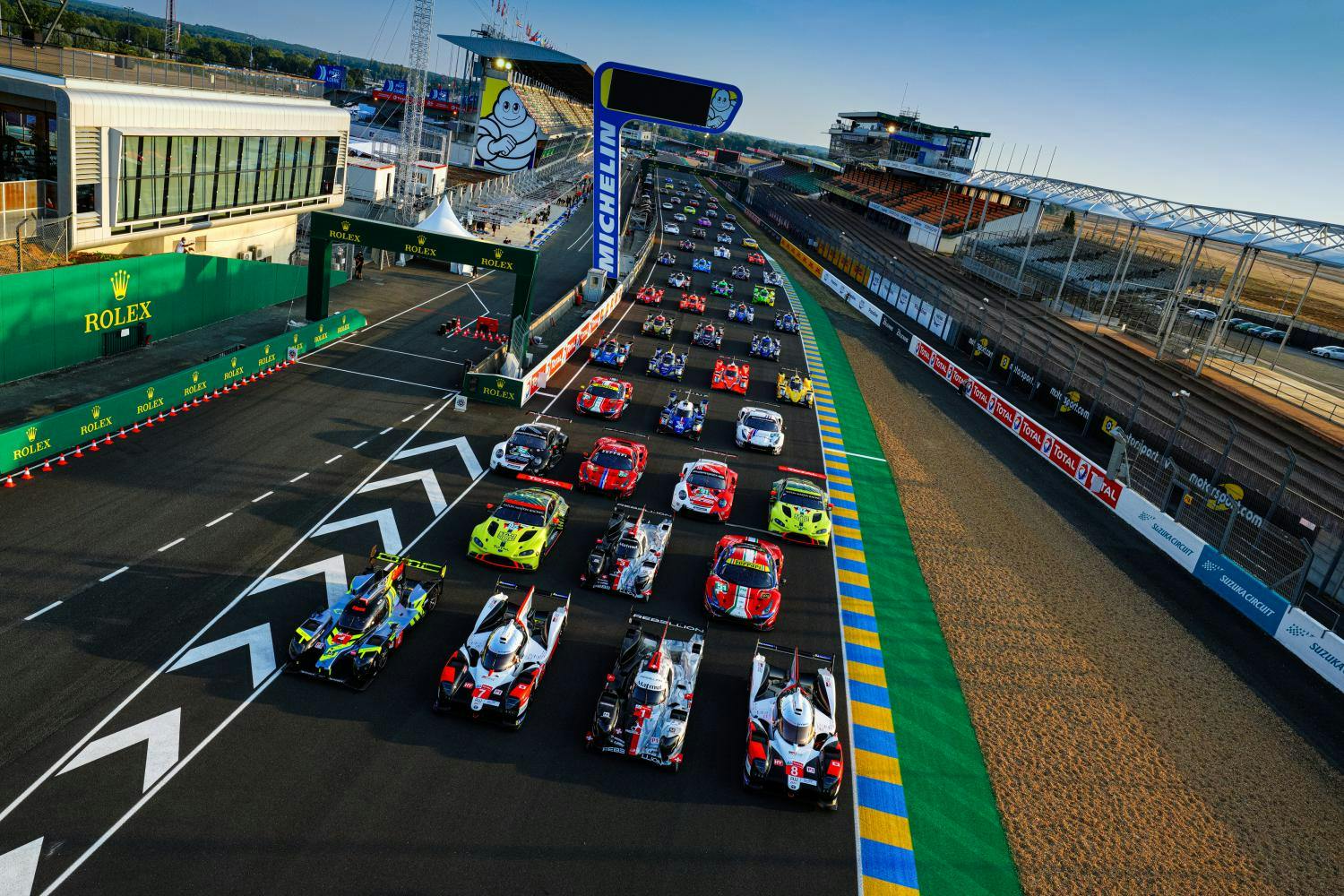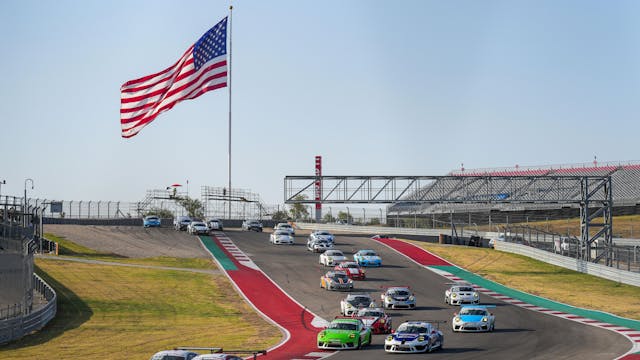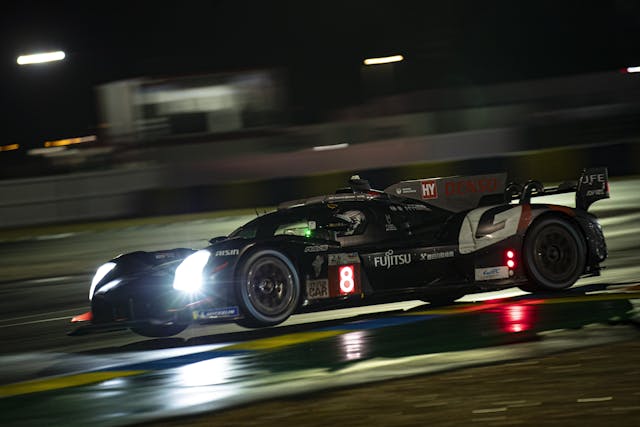4 Reasons to Get Excited about WEC: The “Other” Pro Sports Car Race Series
Circuit of the Americas in Austin, Texas, hosts world-class motorsport—literally. Since it opened in 2012, “COTA” has been the home of the Formula 1 U.S. Grand Prix (with the one exception of 2020, when there was no U.S. event). Moto GP, the top tier of motorcycle racing, began racing at COTA just a year after F1 did. Even NASCAR’s Cup Series has raced here, since 2021. And this week, the World Endurance Championship (WEC), the top tier of international sports car racing, returns to the Circuit of the Americas for the six-hour Lone Star Grand Prix (1 p.m. CDT this Sunday).
If you’re at all familiar with sports car racing, you know about IMSA, the North America–based sanctioning body owned by NASCAR since 2014, whose top-tier series is the WeatherTech SportsCar Championship. Here’s what you need to know about the World Endurance Championship, Europe’s premier sports-car endurance racing series, that’s racing at COTA this weekend.
You probably already know about WEC, even if you don’t think you do: The most famous race in its calendar is the 24 Hours of Le Mans. The race is to WEC what the Daytona 500 is to NASCAR, or the Indianapolis 500 to IndyCar, though the connection between race and series isn’t as widely known.
Like IMSA’s series, the WEC includes a class for purpose-built race cars (“prototypes”) that bear little relation to production models) and for GT cars, those that have to use an engine and a chassis from a car you or I could actually buy. For 2024, in the WEC, there is only one prototype class: Hypercar. All entries must have a hybrid powertrain, but manufacturers have a lot of choice beyond that: The rules accommodate Porsche’s choice to run a twin-turbocharged V-8, Cadillac to run a big ol’ naturally aspirated V-8, and Peugeot a twin-turbo V-6.

As WEC heads to COTA for the sixth round of eight in the WEC, here’s how things stand in the two classes. The #12 Hertz Team Jota Porsche of Callum Illot, Will Stevens, and Norman Nato leads in Hypercar with 140 points, with the #99 Proton Competition Porsche (Julian Andlauer, Neel Jani, and Harry Tincknell) a distant second, with 86. The #92 Manthey PureRxcing Porsche of Alex Malykhin, Joel Sturm, and Klaus Bachler is dominating LMGT3 with 100 points. The #91 Manthey EMA of Richard Lietz, Morris Schuring, and Yasser Shahin is in second with 75 points.


Porsche is just barely leading the manufacturers’ championship, with 126 points; Toyota is right behind, with 122, and Ferrari is third, with 109.
Here are four reasons why racing fans should get excited about the “other” sports-car racing series headed to America’s shores.
Reason 1: The Manufacturers in the Top Class

You’ll easily recognize most of the manufacturers in the WEC. Even your non-racing friends will know a bunch of them: Alpine, Aston Martin, BMW, Cadillac, Corvette, Ferrari, Ford, Isotta Fraschini, Lamborghini, Lexus, McLaren, Peugeot, Porsche and Toyota. Of course, as a racing fan, you’ll know that IMSA has a couple more manufacturers (16 versus 14, across both classes). The reason you should get excited about WEC is that more of those big-name brands are in the top class, vying for the overall win. IMSA’s GTP class includes Acura, BMW, Cadillac, Lamborghini (some of the time), and Porsche. The equivalent class in the WEC, Hypercar, includes all of those except for Acura, while adding Toyota, Alpine, Peugeot. More competition, higher stakes.
(Until a week or so ago, the Hypercar class also included Isotta Fraschini, a very old company that hadn’t made cars since 1949 until it tried, once more, in the ’90s and went bankrupt. The company reappeared out of nowhere in 2022. It raced five events this season before withdrawing, though the program apparently isn’t dead.)
Back in January of 2020, IMSA together with the ACO and the FIA announced that they would work “converge” the rule sets that dictated their top prototype classes. The goal was that the same cars could race in both the WeatherTech SportsCar Championship and the WEC.
The process of defining those rules was anything but quick or simple, but we’re now living in the new world that the sanctioning bodies created—and it’s way fun. The grid is diverse, competition is fierce, and the manufacturers are (mostly) household names, in Europe if not in America. Better yet, at Le Mans this year, the sanctioning bodies announced that the rules would stay the same until the 2029 seasons of WEC and IMSA. The extension of the homologation period makes things more affordable (or less wildly expensive) for teams, which was one of the goals of the “convergence” all along. (You’d be forgiven for thinking Hypercar and GTP are restricted to major automotive OEMs. In theory, a privateer could enter, but in reality, only OEMs have that kind of money.)
Reason 2: Big-Name Drivers

The World Endurance Championship is comprised of three classes, two of which are staffed only by professional drivers—those who make their living by racing. This year, you’ll find multiple drivers on the grid that have raced in Formula 1. Perhaps the most well-known is Jenson Button, who is driving the #38 Porsche Hypercar for Hertz Team Jota. Mick Schumacher is driving for Alpine, in the Hypercar class; Robert Kubica is driving one of the two customer-team Ferrari Hypercars, Antonio Giovinazzi the other. Paul di Resta is driving a Peugeot Hypercar, along with Stoffel Vandoorne. Daniil Kvyat races in the LMGT3 class with Lamborghini Iron Lynx.


One of the better-known WEC drivers who has also spent time in F1 is Brendon Hartley, who races for Toyota. His record in F1 isn’t particularly successful—he drove one season with Toro Rosso in F1, and finished 19th—but his feats in endurance racing are remarkable. The Australian has won four championship titles in the WEC, two with Porsche and two with Toyota. He’s won the WEC’s most grueling race, the 24 Hours of Le Mans, three times. His current teammate, Sébastian Buemi, also has four WEC championships to his name and a slightly more successful tenure in F1, also with Toro Rosso.
Ever one to take on new challenges, seven-time MotoGP Champ Valentino Rossi has joined the WEC in 2024 racing a BMW M4 LMGT3 for Team WRT.
You’ll also recognize names from Indycar (Callum Illot), Formula E (Alex Lynn, Sébastian Buemi), and DTM (Marco Wittman, Sheldon van der Linde, Rene Rast, and Robin Frijns).
With three drivers per entry, and 37 cars entered at the beginning of the 2024 WEC season, there’s no way to do justice to even half of the drivers’ racing careers, so trust us when we say: The racing is world-class for a reason.
Reason 3: Finally, WEC Has Its Own Weekend in the U.S.

The biggest difference between IMSA and WEC is where they race: IMSA races circuits in North America. WEC is a globe-trotting series with a taste for tracks like Imola, Spa, Fuji, Bahrain, and COTA.
If you’re an F1 fan, you’ll recognize all of those, and for good reason: They’ve all have earned a Grade 1 rating from the FIA. Grade 1 is the highest of the six steps denoted by the FIA, and the only category that can host an F1 race. The rating system includes subcategories of each grade to allow for different track surfaces and even different powertrains (ex. electric vehicles). We don’t have time to go into the requirements for run-off area, gradient, barriers, drainage, and medical centers, and nearby advertising boards in this article, so check out this 2021 article from Motorsport.com if you’re intrigued.
The reason U.S. fans should get excited about WEC in the states this year is because, unlike last year, the series gets a race weekend all to itself. WEC doesn’t have to share the spotlight with IMSA, as it did last year at “Super Sebring” in Florida.

We noted after last year at Sebring that it is incredibly expensive for WEC to ship race teams overseas. WEC and COTA are betting big on the series’ return to Texas (the last time was in 2020), and on sport car racing’s recent success in attracting crowds, because Austin’s on the calendar for 2025 as well. Keep a close eye on post-race coverage: Attendance is very important to WEC at COTA, and will likely play heavily into whether Austin remains on the calendar in 2026. Since WEC, unlike IMSA, actually discloses numbers, we might get some data, too. To read the WEC’s guide to the race this weekend, click here.
Reason 4: A Lotta Race Time

One way that the WEC differentiates itself from IMSA, besides the location of the tracks at which it races, is in race format. If you’re racing in IMSA, you’re looking at a race calendar that includes shorter and longer race times: The standard length for the sprint races is 2 hours, 40 minutes, and anything longer than that is considered an endurance race. For 2024, the calendar includes five of each. To win the overall championship in your class, you must earn a certain number of points at sprint and endurance races, but there’s also the IMSA Michelin Endurance Cup, which is calculated based only on points earned in the endurance races, listed in blue here. (If you’ve managed to keep all that straight, we’ll explain why we said Lamborghini only competes in IMSA “sometimes”—it only attends the endurance races.)

WEC, on the other hand, only hosts longer endurance races. There’s only one 24-hour race on the calendar—Le Mans—but there are five six-hour races, one eight-hour event, and another that’s capped at 10 hours. Total race time across the season is roughly 70 hours, vs 58 for IMSA.
If you want to see the full WEC season schedule, with dates, click here.




Excellent racing and excellent and knowledgeable announcers unlike what we out of the USA see from the contracted out IMSA announcers who seem to miss events or speculate overly wrong on a particular incident on track. Plus how many times do we have to here the main announcer talk about his friends or exploits while missing action on the track. Where’s Dorsey Shroeder, Calvin Fish, Brian Till and Leigh Diffey?
The only reason I’m glad Motortrend is included in my cable package, though unfortunately just two races.
WEC is some great racing. I enjoy watching it.
It was a good race this weekend, with reasonable weather (at least for south Texas in late August). I’m glad to see the WEC return to COTA and hope it stays. Two Ferrari Hypercars on the Podium, with the 2nd place Toyota right on the tail of the leading Ferrari after 6 hours of racing! As a Corvette fan, it was sad to see the Corvettes still struggling, but it was good to see Juncadella put in a strong final drive to bring the car up to 8th in class. The class-winning Aston Martin dominated the entire race. Great racing!
F1 next on the schedule at COTA, followed by the SVRA’s vintage racing in early November, a favorite of mine.